Story and photos by Anita Westervelt, Texas Master Naturalist
It’s always exciting to find a big caterpillar munching away on leaves of vines or other plants.
Recently, a really big caterpillar appeared before my eyes as I was eradicating a vine that was over-powering a huge Berlandier’s fiddlewood shrub (Citharexylum berlandieri).
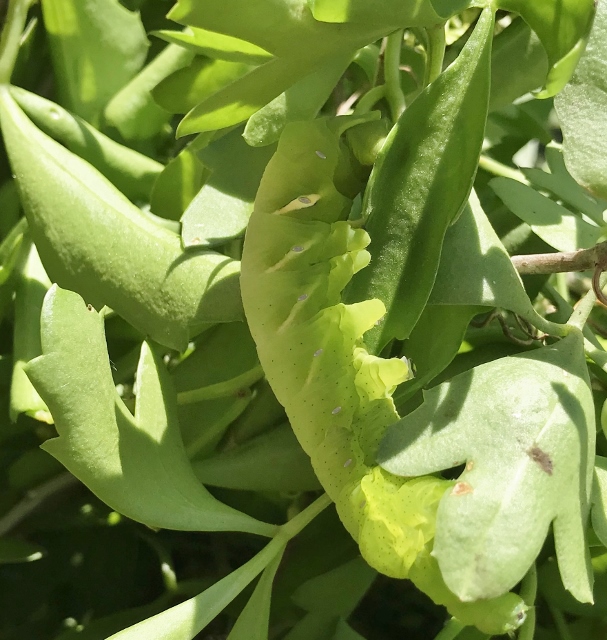
The vine was what most locals call possum grape (Cissus incisa). It had travelled up through the shrub, draped itself over the crown, and covered one side of the bush.
Also called marine ivy, the plant is in the grape family. It’s a pretty vine, with light green fleshy leaves that are sturdy and crisp. Greenish umbrella-shaped clusters of flowers bloom in late spring and summer that attract butterflies. Black, shiny berries mature in fall and are eaten by birds. The vine stinks when any part of it is crushed or bruised; some say the odor is reminiscent of burnt rubber.
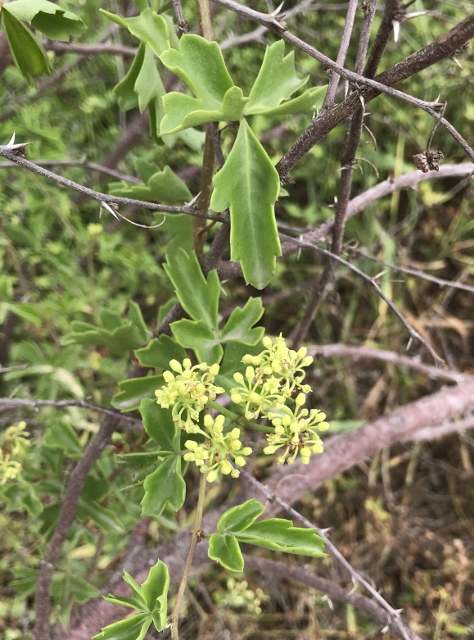
The vine can cling or trail some 30 feet, hooking on to plants, trees, fences and structures with curling tendrils. However, it pulls away easily, coming down in great clumps when tugged.
One such clump carried down the huge caterpillar, which was still voraciously eating away on a leaf while also trying to escape my photo opportunity. With a clear photo, I identified it as a vine sphinx moth caterpillar. The vine sphinx moth is gorgeous. It’s a large moth shaped like a stealth bomber aircraft and painted in an Art Deco-esque geometric design of cream and tan on a dark brown body.
After identifying the caterpillar, I gathered a large amount of vine around it and put it in a secure place. The caterpillar was of a size that indicated it would soon quit eating and begin its cocoon stage.
When working with possum grape, gloves and long sleeves are recommended; the vine can cause skin irritation.
Two years ago, I found a caterpillar eating the leaves of a possum grape vine that was covering a portion of fence. I identified it as a Wilson’s wood nymph moth caterpillar. Last month, while I was walking along the edge of a resaca, my attention was drawn to what looked like a scrap of tinfoil that had hung up on a small, bare shrub branch, glinting in the harsh morning sun. Upon closer inspection, it was the beautiful Wilson’s wood nymph moth itself, hunkered down for a day’s rest.
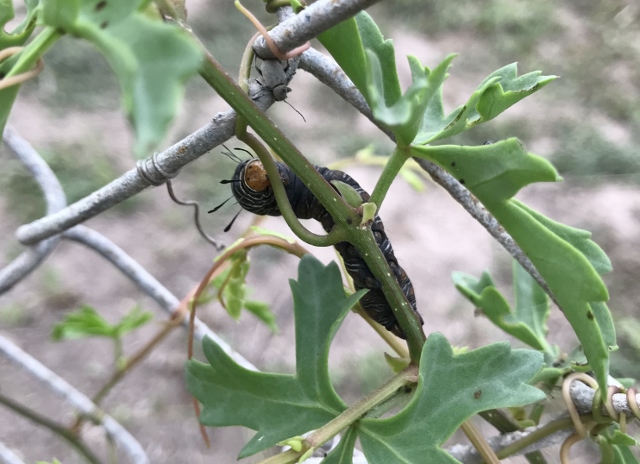
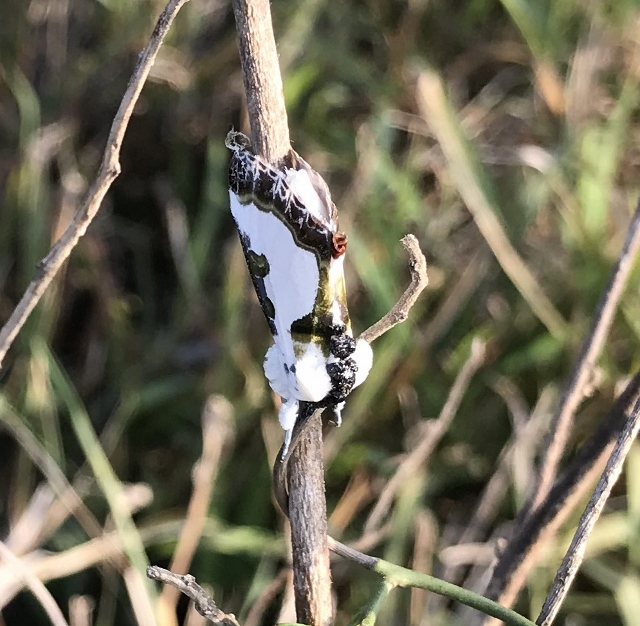
Many people don’t give moths a second thought. They aren’t daytime attention-getter fliers like birds, butterflies and dragonflies. But after the sun goes down, moths and bats take over the night shift, pollinating nocturnal-blooming flowers and food crops.
Although both fiddlewood and possum grape are native, the fast-growing, prolific vine is the bane of many a gardener. It reproduces underground from tubers that can get as large as an arm. The vine is nearly impossible to get rid of unless the tubers are dug up.
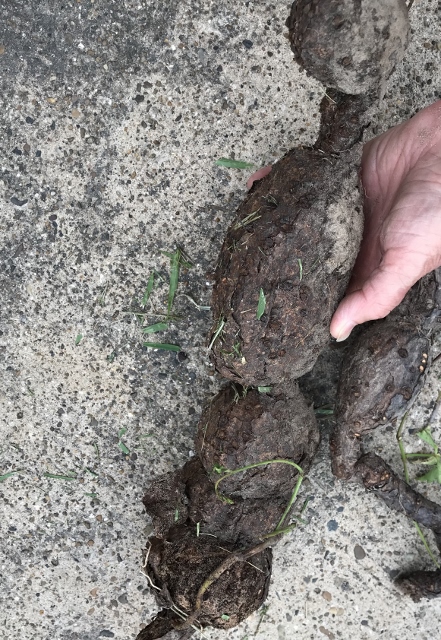
The Berlandier’s fiddlewood shrub that I rescued from the possum grape is one of those all-round plants that has something for everyone, critter-wise. It flowers and fruits all year, providing nectar for bees, butterflies and other pollinators; chachalacas, mockingbirds and other birds eat the ripe fruit. Song birds perch among the branches and sing their pretty melodies.
